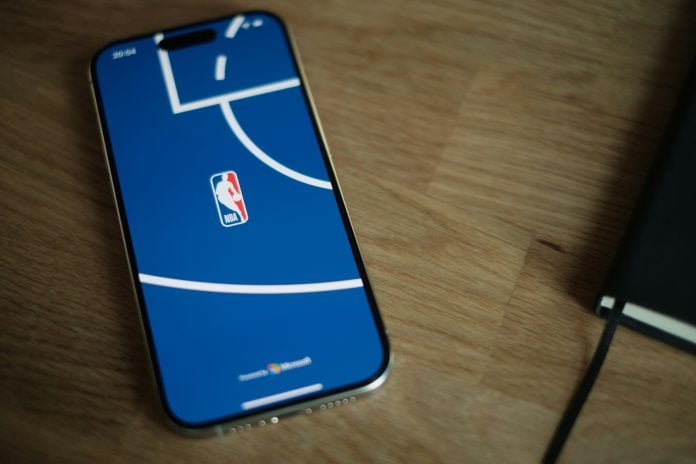Let’s be honest: if you want to succeed with basketball content online, you need a solid social media playbook.
Networks change quickly, and it takes more than just sharing cool dunks or funny clips. You’ve got to understand the guidelines – like what’s okay to show, how to avoid copyright issues, and the importance of treating players and fellow creators with courtesy.
In this guide, I’ll show how I handle highlights the right way, clear up what fair use really covers, and offer tips for building a reputation people can count on.
- What Is a Social Media Playbook?
It is basically your blueprint—a step-by-step manual that details how you’ll approach platforms to achieve your objectives. If you create basketball content, your roadmap should touch on a few key points:
– Types: Highlight clips, in-depth analyses, interviews, and behind-the-scenes footage.
– Schedule: Timing and frequency of articles to maximize exposure and retention. Sprout Social reports that brands posting at least three times per week see 40% higher engagement compared to irregular ones.
– Strategy: Tailoring material for each network—for instance, concise TikTok visuals versus comprehensive YouTube breakdowns.
– Interaction: How to respond to comments, participate in discussions, and cultivate a community ethically.
- Building a Social Media Playbook
Aim for an outline that’s both inventive and structured—and always hold legal considerations in mind. Here’s how you can craft one:
- 1. Define Objectives
What’s your endgame? Do you want to attract fans, teach up-and-coming players, or establish yourself as a basketball analyst? .
- 2. Understand Audience
Take time to get to know your crowd—their ages, passions, and habits. Are you reaching high school athletes, diehard fans, or those who just enjoy the game?
In 2024, 68% of 18–34-year-olds followed sports accounts, so that segment is key.
- 3. Diversify Content
Keep things lively to maintain interest:
– Recaps: Showcase those epic scenes and winning shots.
– Player Features: Zoom in on standout athletes.
– Breakdowns: Walk viewers through plays and on-court tactics.
– Community: Run polls, host Q&As, or feature reactions.
- 4. Nail Your Timing
Leverage platforms like Sprout Social or Hootsuite to find your ideal distribution windows. Basketball posts often perform best right after matches or major events.
- 5. Respect Legal and Ethical Rules
Don’t overlook this step. Make sure you:
– Use only the footage you truly need.
– Transform raw footage with commentary, annotations, or overlays.
– Credit teams, leagues, and broadcasters for transparency.
- 6. Track Metrics
Monitor how each post performs—views, shares, comments, and more. HubSpot reports that creators who regularly check analytics grow their audience up to 30% faster.
- Responsible Use of Screen Video Capture
Screen recording is a total game-changer for anyone making basketball content. You can catch those authentic moments – crazy crowd reactions and the in-depth breakdowns fans crave.
But you have to be smart about it – employing apps carelessly will damage your credibility.
- Best practices
– Focus on the main: Don’t record full sessions. Just snag the key plays or parts you want to discuss.
– Put your own spin: Add voice, custom graphics, slow-motion, or commentary.
– Avoid HD broadcasts: Capturing high-quality streams is risky territory. It’s basically duplication and can hurt your fair use argument.
– Stay organized: Name your files by date, matchup, or player. Trust me – when you’re hunting for that one highlight weeks later, you’ll be glad you did.
– Enhance: Free online video or PDF editors help you insert stats, diagrams, or captions.
– Always back up: Keep your screen recordings stored safely. Losing your best clips, or having them get leaked, just isn’t worth the risk.
- Understanding Fair Use in Basketball Content
Once you’ve grabbed your footage, it’s time to wrap your head around fair use.
These are the guidelines that let you include snippets of someone else’s copyrighted work without asking, as long as you’re careful about how and why you employ it.
If you’re creating sport posts – like I do – these regulations pops up constantly, whether you’re breaking down clutch sequences, analyzing players, or learning new tactics.
- The Four Factors
1. Purpose
If you’re offering your own insights, teaching, or breaking things down with real analysis, you’re in a good spot. Non-commercials usually gets a little breathing room.
2. Nature
It’s generally safer to record screen raw footage, stats, or straightforward clips than to lift fancy, polished packages.
3. Substantiality
Less really is more here. Posting short segments is way smarter than uploading an entire match. Still, even a few seconds can be too much if it’s the most important part.
4. Effect
Don’t try to replace the original broadcast. If your video isn’t competing with or devaluing the source, and you’re making something new out of it, you’re probably fine.
- Legal Context
Thanks to the Lenz v. Universal Music Corp. decision, copyright owners are supposed to consider fair use before hitting your content with a takedown.
Still, always focus on educating, critiquing, or analyzing – never copying.
- Ethical Principles for Sharing
Simply sticking to the rules in recording screen isn’t enough. If you want to earn real respect in the basketball community, you need to aim higher and hold yourself accountable.
- Guidelines for Creators
– Acknowledge the source. Shout out the leagues, teams, networks, or fellow producers responsible for the footage you use.
– When you’re unsure, reach out and get permission first. It can save you a lot of hassle later.
– Be honest with your content. Share what actually happened – don’t alter highlights in a way that misleads your audience.
– Protect privacy. Never upload behind-the-scenes or personal moments unless you have the go-ahead.
Choosing the ethical route helps you build a dedicated following and protects you from both legal and reputational issues.
- Case Study: Brand Playbook Implementation
Picture this: you run a TikTok page all about NCAA hoops. Here’s how you could apply these codes:
– Post a couple of reels each night after the games wrap up.
– Analyze standout points with easy-to-follow breakdowns or tutorials.
– Get your followers involved – host polls or Q&A sessions about performances.
– Use a video recorder to capture clips. Add your own touches like commentary, slow motion, or graphics to make it stand out.
– Tag and credit the NCAA and any broadcast networks in every post.
- Conclusion
A social media playbook is a strategic combination of planning, legal awareness, ethical guidelines, and data-driven analysis.
Thoughtful application of these tenets benefits basketball content creators, fans, and the broader community, elevating digital sports material responsibly.









